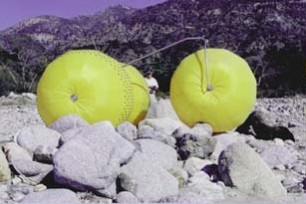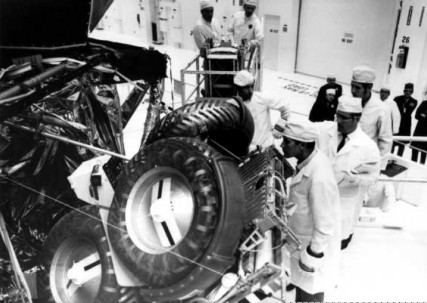Surface
Vehicle
Background
Martian TerrainVehicle
Lunar Rover
Size and CompositionCommunication and Navigation
Suspension
Wheels
Steering/Brakes
Power
Modular Trailer System
The
first step in wheel design was deciding on an appropriate clearance for
the rover. We chose 0.4m as the best compromise between the need for high
ground clearance and the need to minimize wheel size and torque requirements.
Originally a higher clearance was wanted to allow the vehicle to travel
over more of the rocks scattered over the surface, but we settled on 0.4m
since we can rely on the astronaut operator to steer around larger hazards.
|
||||||||
| Rather than depending on more rigid alternatives, we propose applying an extension of the inflatable technology currently being developed at JPL. Though not finalized in design, inflatable wheels were chosen because they are portable, easily changed (seal the replacement wheel onto the axle and inflate), and are both lightweight and durable. More research into the appropriate materials and precise shape of these wheels will be developed as the rest of the mission progresses over the next decade. Inflation will be provided by a solid-to-gas reaction similar to that used in automobile air bags. The reaction pellets are more easily transported and more reliable than pre-pressurized gas canister or a mechanical pump. If the inflatable wheel technology has not progressed to a sufficiently advanced and reliable stage in time for the mission, then traditional tread-enhanced hollow metal wheels will be used. | ||||||||
http://www.jpl.nasa.gov/adv/tech/rovers/summary_overview.html |

